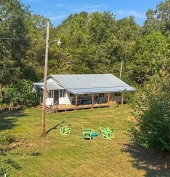
 11
11




 2
2




Invasive plants are Earth's way of insisting we notice her medicines. Stephen Herrod Buhner
Everyone learns what works by learning what doesn't work. Stephen Herrod Buhner
 4
4




Anne Miller wrote:Since you will be having a 1/4 acre market garden and a 1/2 acre annual garden do you plan to use equipment to do the planting?
I cant answer your first question though I feel rebranding might not be a bad idea as you learn what works and what doesn't work.

 8
8




Live, love life holistically
 4
4




Invasive plants are Earth's way of insisting we notice her medicines. Stephen Herrod Buhner
Everyone learns what works by learning what doesn't work. Stephen Herrod Buhner
 3
3




Anne Miller wrote:We do small wildlife food plots and a large sunflower garden.
This is what we use:
https://permies.com/t/120293/garden-scale-drill-seeder#970283
https://permies.com/t/59219/permaculture/Seed-Drill-Broadcast
https://permies.com/t/108805/seeder-Ruth-Stout-method
 7
7




Ulla Bisgaard wrote:While we don’t have as much room as you do, we do have a food forest plus a raised bed garden. The food forest is 3300 square feet, where I am growing mediterranean and sub, tropical fruits and vegetables.
In the food forest I have a wide variety of trees, shrubs and ground cover. The top layer is a pecan tree, cashew tree, prickly pear and palm trees, some being bananas. Eventually my Barbados cherry will also get up there. The middle layer is plum trees, guava, lemons, elderberries, tangerines and peaches. The shrub layer is Natal plums, tree collards, hibiscus, roses, rock roses, borage, coffee, cardamom, tea, raspberries, blackberries, pineapples, artichoke and currants. The bottom layer has strawberries, and a mix of herbs, onions, cassava, rams, wild garlic, bayleave, clover medicinal flowers. For vines I grow black pepper, sweet potatoes, melons and passion fruit.
It has taken us almost 9 years to get to this point. We starts with some raised beds to grow annual and to start perennials in. Once the perennials out grew the raised beds, they were moved to the food forest. As the years passed, we added more and more raised beds, so we now have 20 of them. Out of those 5 are full of perennial vegetables and heat sensitive herbs and plants.
Have you thought about making the food forest into a tourist attraction and educational spot? I give tours several times a year, teaching people about permaculture, food production, pest control and wildlife management. I am sure that schools would love to visit as well.
As for cash crops for restaurants I would recommend mushrooms, herbs, dandelion leaves, dead nettle, and edible flowers. I know several people who do that mix, and earns a lot that way.
Last, I would recommend you do your planning on paper first. Did you take the permaculture design course?
I didn’t and have regretted it. Instead I used a program called garden planner 2, which works great, for our small homestead.
 5
5




 6
6




Douglas Alpenstock wrote:C Murphy, we live in interesting times. Your location and ability to grow and ship fresh veg may be of national importance very soon. We have the resilience and the will to push past the current nonsense. My 2c.
 6
6




https://againfarmstead.com/ | @againandagainfarmstead
 7
7




 3
3




If there is one thing the Wizard of Oz has taught me, it is not to trust school teachers on bicycles.
 7
7




Ulla Bisgaard wrote:While we don’t have as much room as you do, we do have a food forest plus a raised bed garden. The food forest is 3300 square feet, where I am growing mediterranean and sub, tropical fruits and vegetables.
In the food forest I have a wide variety of trees, shrubs and ground cover. The top layer is a pecan tree, cashew tree, prickly pear and palm trees, some being bananas. Eventually my Barbados cherry will also get up there. The middle layer is plum trees, guava, lemons, elderberries, tangerines and peaches.












 8
8




Barbara Simoes wrote:Ulla, I'm surprised that I didn't see pistachios or avocados. Is there a reason why you don't grow them? Are the palms date palms? If I had the climate, these would be on the top of my list! If I ever win Powerball, I'd get some land where it's warm and grow all the things I can't grow in Vermont...Right now, there is half an inch of snow on the ground...Ughh.
Ulla Bisgaard wrote:While we don’t have as much room as you do, we do have a food forest plus a raised bed garden. The food forest is 3300 square feet, where I am growing mediterranean and sub, tropical fruits and vegetables.
In the food forest I have a wide variety of trees, shrubs and ground cover. The top layer is a pecan tree, cashew tree, prickly pear and palm trees, some being bananas. Eventually my Barbados cherry will also get up there. The middle layer is plum trees, guava, lemons, elderberries, tangerines and peaches.
Live, love life holistically
 8
8
















 6
6




Barbara Simoes wrote:I totally get it. I am in awe of some of the things you're growing! I thought pistachios were quite small (They max out by25- 30' and are only 15-30' wide...although they do require a male and a female), that's why I was surprised. I read somewhere on this site that someone in Utah was growing pistachios, and I think he said he was in zone 5 like I am...that's when I wanted to find out about them. But, Utah zone 5 and Vermont zone 5 are lightyears apart. We are not nearly as dry as they are, nor as sunny. What you grow sounds very exotic to me! Coffee and bananas...wow! You also grow stuff that we can grow in the frigid Northeast. I'm feeling plant envy!
Live, love life holistically

 6
6




Working toward a permaculture-strong retirement near sunny Sperling.
 7
7





|
I'm THIS CLOSE to ruling the world! Right after reading this tiny ad:
The new kickstarter is now live!
https://www.kickstarter.com/projects/paulwheaton/garden-cards
|






